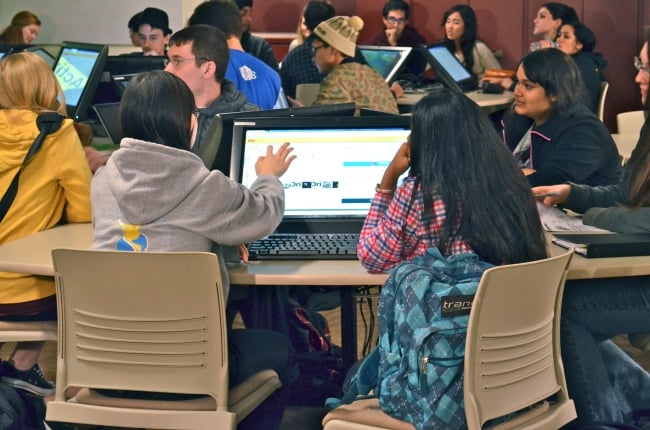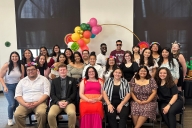You have /5 articles left.
Sign up for a free account or log in.

A classroom at Arizona State
Arizona State U./Sandra Leander
Scott Freeman and the other scholars behind a new study comparing the efficacy of lectures with more "active" forms of instruction in the science classroom are not aiming low in describing the significance of their findings.
Just as the U.S. surgeon general's 1964 report on smoking provided strong evidence linking tobacco use to ill health, Freeman said, the study he and his colleagues published Monday "provides overwhelming evidence that active learning works better than lecture." That may not mean that instructors stop lecturing, he said, "but it shouldn't be about the evidence anymore."
The study, published in Proceedings of the National Academy of Sciences by a team of researchers at the University of Washington and University of Maine, is a meta-analysis of 225 previous studies comparing student outcomes in science, technology, engineering and mathematics courses that use lectures only versus those that incorporate group problem-solving, use of clickers, workshops or other forms of "active learning."
On average, students in sections characterized by active learning scored 6 percent better on examinations than did their counterparts in lecture-only classrooms, and those who were in lecture-driven sections were 1.5 times likelier to fail than were their peers in active learning classes. About a third of all students in traditional lecture classes either withdrew or got Fs or Ds, compared to about one-fifth of students in sections with active learning approaches.
The researchers say their findings held across all STEM disciplines and in class sizes and course levels of all sorts.
"[T]he data suggest that STEM instructors may begin to question the continued use of traditional lecturing in everyday practice," the authors write. "Although traditional lecturing has dominated undergraduate instruction for most of a millennium and continues to have strong advocates, current evidence suggests that a constructivist 'ask, don't tell' approach may lead to strong increases in student performance."
In an interview, Freeman, principal lecturer in the biology department at Washington, demurred when asked if it was appropriate to extend his analogy about the surgeon general's 1964 smoking report to the two studies' conclusions: as tobacco is bad for smokers, is lecturing bad for students?
"I'm not sure I would go quite that far, but some people have," he said, citing a recent article in which Mary Ann Rankin, senior vice president and provost at the University of Maryland at College Park, was quoted calling lectures "toxic" to student health.
Freeman acknowledged that the study presents a stark dichotomy, contrasting lecture-only courses with those in which instructors used any of a range of other techniques, and without distinguishing among courses based how much active learning they incorporate. (He describes his own 500- to 700-student courses as including about 60 percent students talking to each other and about 40 percent him explaining concepts or problems to them.)
An examination of nine studies that produced the "most extreme values" in terms of positive student outcomes showed that seven were entirely lecture-free, Freeman said -- though he noted that number was too small to draw truly meaningful conclusions.
'False Polarizations'
It is precisely the survey's binary distinction that bothered Frank Furedi, a former sociology professor at the University of Kent who is among numerous scholars who have written defenses of the lecture in recent years.
Furedi complained about the "false polarizations" in the PNAS study.
"Only an idiot would rely entirely on lectures -- that hasn’t happened for 200 years," he said. "The art of teaching is getting that balance between giving the lectures creatively to impart information and organizing more intensive interactive discussions with students, in different formats."
Furedi also said that he was unsurprised that the study found students in courses with active learning to be less likely to fail -- but that there were multiple ways to interpret that result.
"The whole dynamic toward grade inflation is far more prominent among the departments that focus on active learning, at least in the European context," he asserted. "One of the reasons why people use active learning is because they’re worried about losing students, boring students. If you're simply interested in keeping bums in seats, it rewards people for time served. Active learning may get good results in terms of retention, but it may be an illusory outcome."








